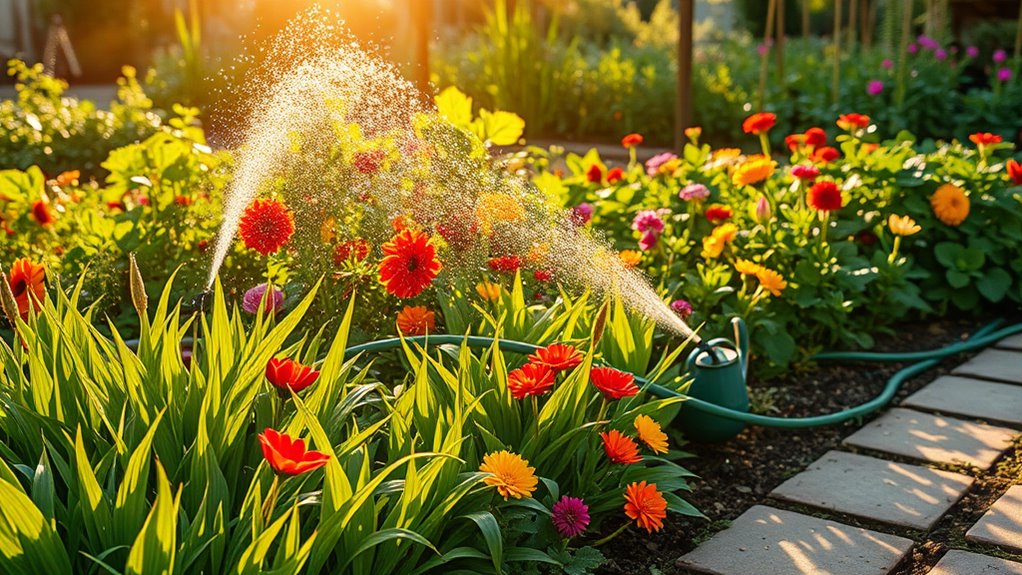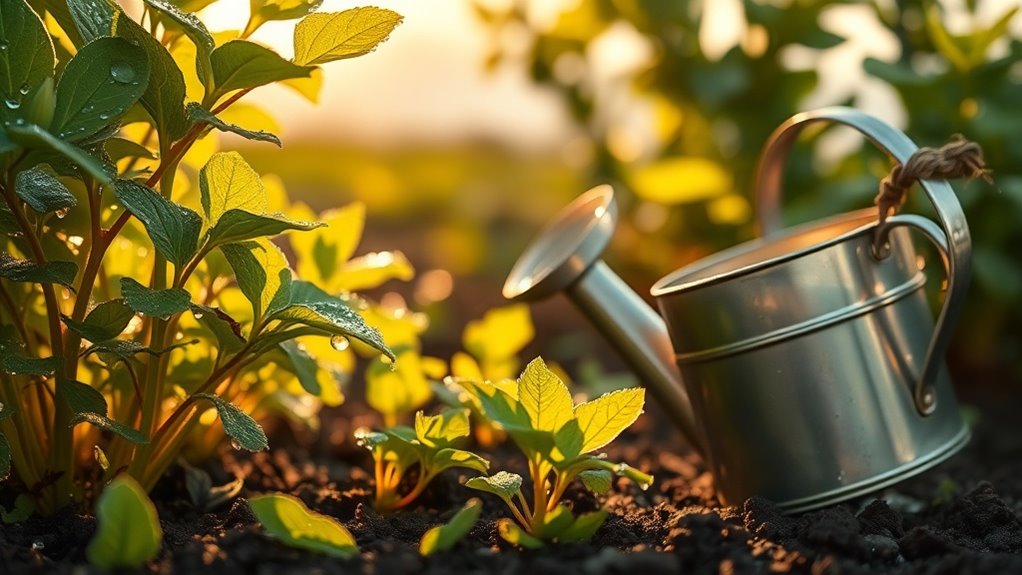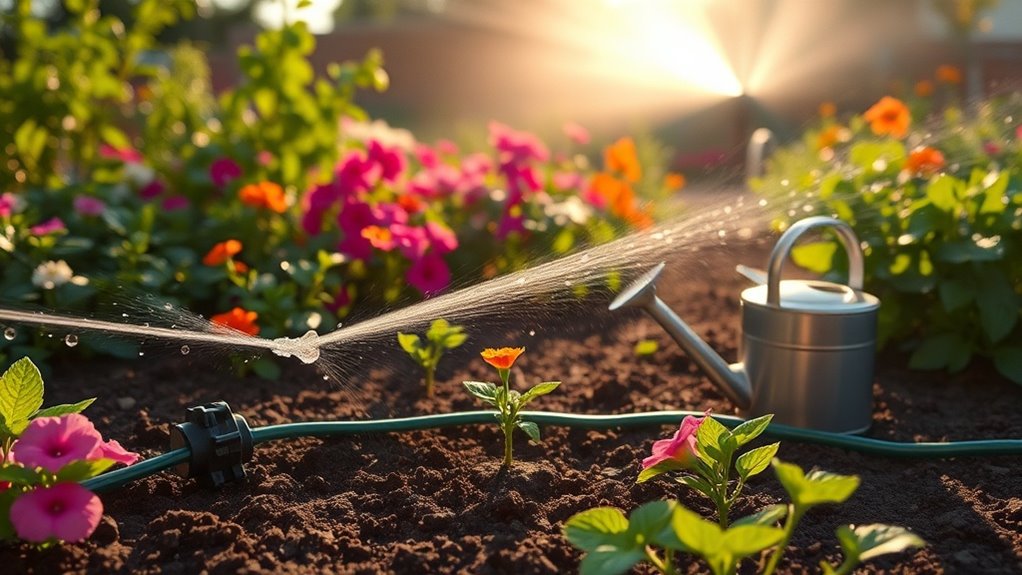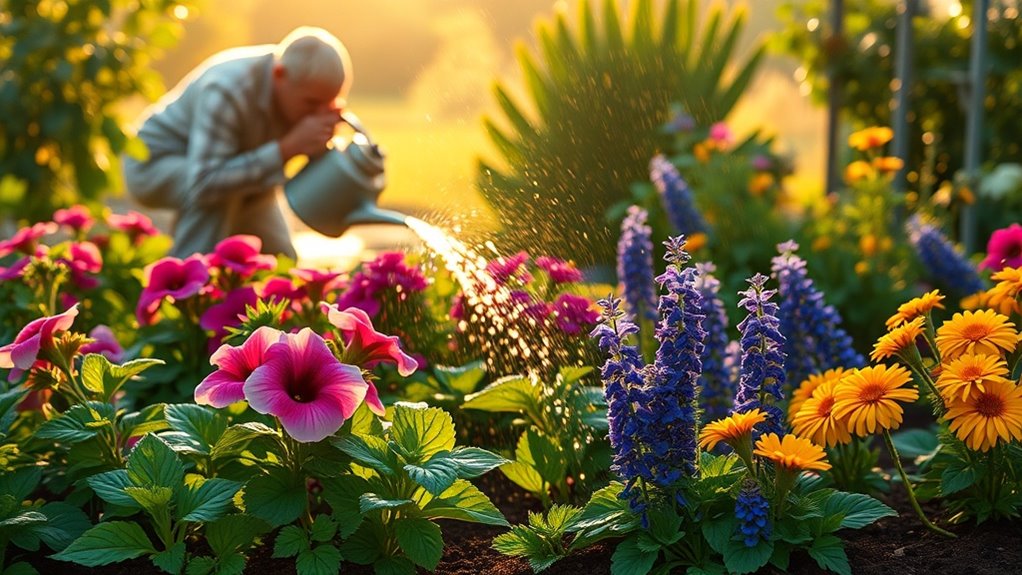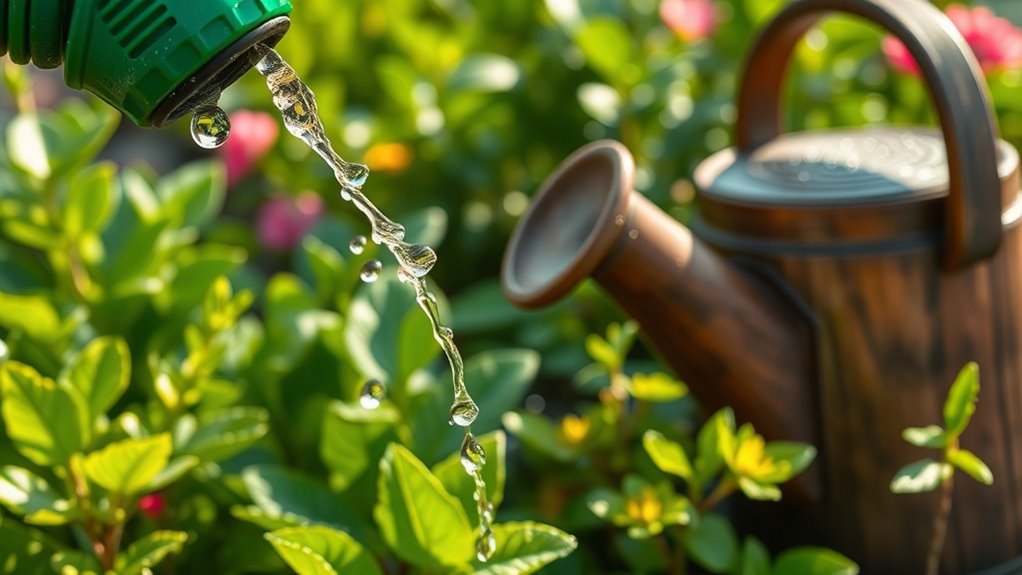This Watering Schedule Gave Me the Greenest Garden Yet
When it comes to creating a thriving garden, understanding your plants’ specific watering needs is crucial. You can’t just water blindly; it requires a thoughtful approach tailored to each plant’s requirements and seasonal conditions. Early morning is often the best time, but there’s more to this strategy than meets the eye. If you want to discover how a smart watering schedule can transform your garden into a lush paradise, keep exploring these essential techniques.
Understanding Your Garden’s Watering Needs
How can you ensure your garden thrives with the right amount of water? Start by following a weekly watering guide tailored to your plant’s specific needs.
Assess factors like soil type, plant species, and weather conditions. Generally, deeper watering promotes strong roots. Additionally, understanding optimal watering techniques can significantly enhance your plants’ growth and resilience.
Monitor your garden closely, adjusting your schedule as necessary, to create a lush, vibrant environment that flourishes throughout the growing season.
The Ideal Timing for Watering
Determining the optimal time to water your garden can significantly impact its health and resilience.
Watering in the early morning, when temperatures are cooler, allows moisture to soak into the soil before the sun evaporates it. This timing promotes deep root growth and reduces disease risks. Additionally, following an effective watering schedule can further enhance plant growth strategies and ensure that your garden thrives.
Avoid watering in the evening, which can lead to fungal growth and excess moisture retention overnight.
How Much Water Do Plants Really Need?
Ever wonder just how much water your plants truly need?
Most plants thrive on about 1 inch of water per week, but this can vary.
Check soil moisture—if it’s dry an inch down, it’s time to water.
Consider plant type, size, and potting conditions. Additionally, overwatering signs such as yellowing leaves and root rot are crucial to recognize in order to maintain plant health.
Adjusting for Seasonal Changes
As seasons change, your watering schedule must adapt to the varying needs of your garden. In spring and summer, increase frequency as temperatures rise and growth accelerates.
Conversely, during fall and winter, reduce watering to prevent root rot and conserve resources. Monitor rainfall, soil moisture, and plant responses, adjusting as necessary to ensure your garden thrives year-round. Implementing smart watering techniques can significantly enhance efficiency and garden health.
Stay proactive for a lush landscape!
Plant-Specific Watering Tips
Understanding the specific water needs of each plant in your garden is crucial for promoting healthy growth and preventing stress.
Succulents, for instance, thrive with infrequent watering, while leafy greens prefer consistently moist soil.
Pay attention to your plants’ signs; wilting indicates thirst, yellowing leaves might signal overwatering.
Tailoring your watering approach ensures vibrant, flourishing plants throughout the growing season. A key technique is deep watering, which allows moisture to reach the roots effectively.
Monitoring Soil Moisture Effectively
How can you ensure your plants are getting the right amount of water? Use a moisture meter for accurate readings, or simply stick your finger into the soil—if it feels dry an inch down, it’s time to water.
Regularly check moisture levels, especially during hot spells. By staying vigilant, you’ll prevent overwatering and keep your plants thriving with optimal hydration.

